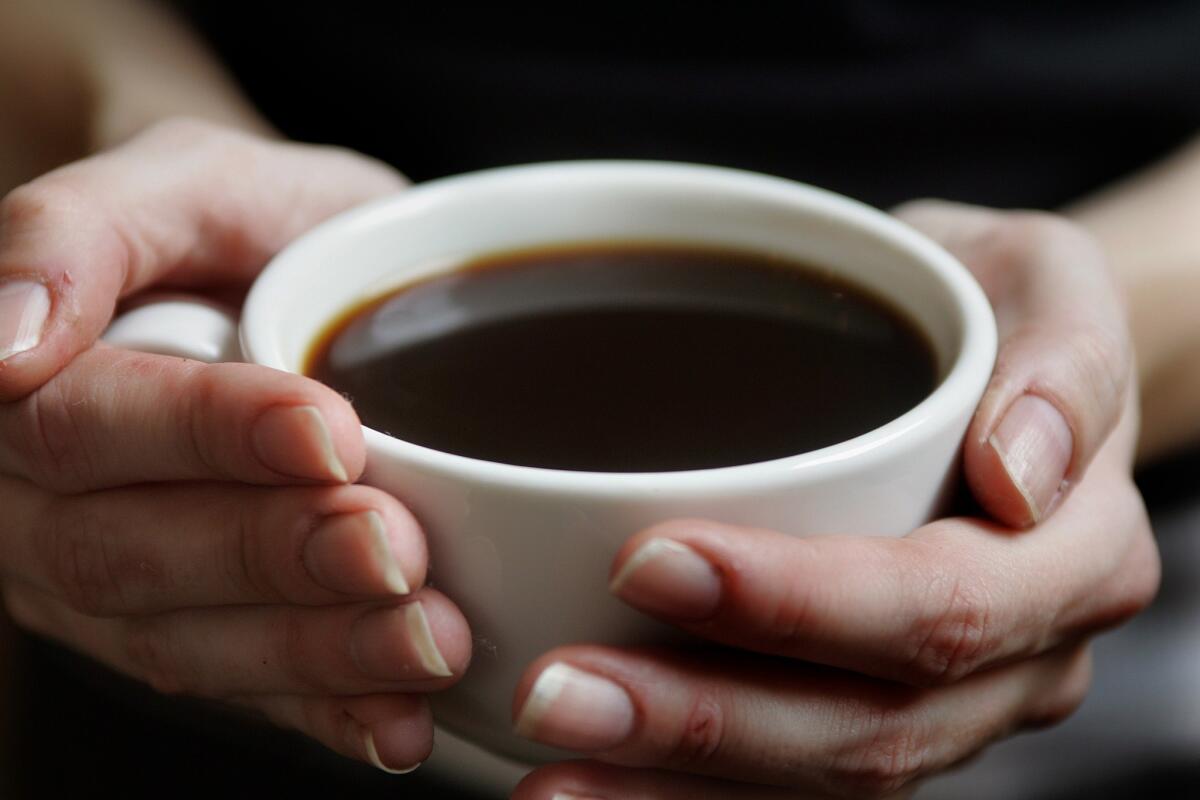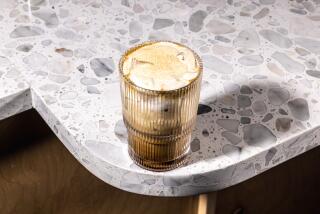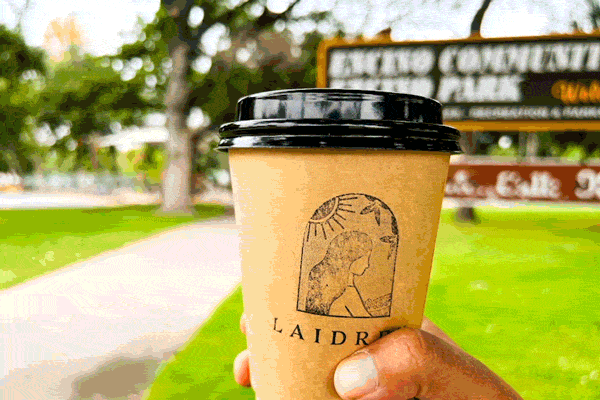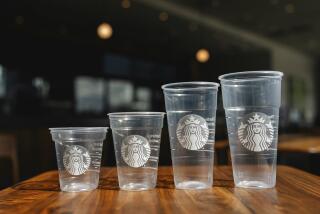Instant coffee is back, and snobs are paying $3.25 a cup

Benji Walklet recently reviewed the instant java sold by California start-up Waka Coffee. Walklet, who runs the Coffee Concierge blog, liked it but got a second opinion from a trusted critic â his wife, who has been known to compare coffee she dislikes to gasoline.
âIt passed my wifeâs taste test,â he said, âand thatâs really saying something.â Walklet typically drinks the real thing but stocked up on a 35-serving pack of Waka instant.
âIf the day gets off to a slow start or weâre in a hurry, itâs great to have instant coffee,â he said. âI wouldnât buy Nescafe or Folgers or Maxwell House. Thatâs the snob in me talking.â
Instant coffee, often relegated to brownie recipes and steak rubs, is making a comeback and even winning grudging approval from connoisseurs. A handful of start-ups including Waka, Sudden Coffee and Swift Cup Coffee have improved the taste and are attracting a new generation of convenience seekers who are too young to associate the product with the stuff their grandparents drank.
They donât mind paying up, either: A Sudden four-pack sold at the Intelligentsia coffee chain goes for $13, or about $3.25 a serving.
Instant remains a niche product, with just 6% of Americans drinking it, according to the National Coffee Assn. But U.S. retail sales of the category rose in the year that ended in June â the first gain following at least three years of declines, according to Nielsen data. Rising sales and instantâs popularity among 18- to 39-year-olds have prompted industry stalwarts Starbucks Corp. and Dunkinâ Brands Group Inc. to reevaluate the category.
âInstant is super convenient and portable,â says Jim Watson, a beverage analyst at Rabobank. âYou can throw a couple in your bag and travel everywhere. Instant has always been weighed down by being seen as a really low-end product. These specialty guys are making instant coffee cool again.â
Developed by Nestle in the 1930s, instant coffee was made by spraying brewed liquid into hot air and drying it into powder or granules. Nestle, Folgers and Maxwell House quickly became the go-to brands for middle-class people around the world. A Folgers television commercial featured a husband complaining about his wifeâs coffee: âHoney, your coffee is undrinkable,â he says. Later, she serves him a cup of Folgers, and marital harmony is restored. âInstant Folgers,â an announcer says. âTastes good as fresh-perked.â
For those who had tried the real thing, instant coffee lacked the body and flavor of a quality cup of joe. No matter, Americans were hooked on convenience. Making instant involved nothing more than spooning crystals into a mug and adding boiling water, and then maybe whitening the concoction with a powdered creamer.
Everything changed when Starbucks created the cafe culture in the 1990s and popularized Arabica beans â the premium variety. A snob ethos took hold, and consumers thought nothing of paying $3 or more for a cup of coffee. In 1998, Keurig K-Cups â single-use pods â entered the mix. It wasnât quite instant, but it provided a popular way for time-pressed people to brew fast.
Instant was reimagined 10 years ago, when Starbucks introduced Via Ready Brew packets in an effort to sell more coffee in grocery stores. Via was made with 100% Arabica beans, cost less than $1 per cup and appealed to people on the go. Sales have been steady but have never really taken off, says John A. Quelch, dean of the Miami Business School at the University of Miami, who has done Starbucks case studies. âThey didnât put a tremendous amount of marketing muscle behind it,â he says.
With K-Cup growth slowing and Starbucks not pushing Via hard, a host of small players have emerged, employing new methods they say produce better-tasting instant. They typically freeze-dry Arabica beans and sell their wares online or in specialty coffee shops.
Sudden was co-founded by a Finnish barista named Kalle Freese, who pioneered a technique in San Francisco that involves lowering the temperature of brewed coffee to negative 20 degrees Fahrenheit and then heating it slightly to let the water vaporize. The traditional heating method can taste âwoody and burnt,â said Josh Zloof, chief executive of Sudden. âThereâs no reason from a science perspective why instant coffee has to taste bad.â
Sudden, sold in plastic tubes containing 4.5 grams of coffee, can be mixed with hot or cold water. The company avoids the word âinstant,â choosing instead to describe the product as âcrystallized.â The 4-year-old San Francisco start-up has raised $5 million and is looking for more funding to ramp up capacity. Zloof said that heâs had talks with bigger companies and that itâs just a matter of time before Sudden inks partnerships.
Zloof said quality instant solves the âsecond-cupâ problem â when people are looking for an afternoon caffeine fix but donât necessarily want to head to Starbucks or drink office-provided K-Cups or Nespresso pods. âItâs not really replacing lower-quality instant coffee,â he said. âItâs also not really replacing going to the cafe or the morning ritual.â
David Kovalevski, who started Waka last year, said his products have landed in âbest instant coffeeâ lists from major coffee publications and is confident sales will improve as his company educates consumers about the merits of instant coffee and differentiates itself from traditional brands.
Instant coffeeâs growing popularity has prompted big brands to take a second look. Dunkinâ executives are taste-testing new prototypes and working with partners to create instant varieties to offer in its stores.
âThe quality has gotten significantly better,â Dunkinâ CEO Dave Hoffmann said. âBefore any of that youâd probably rub it on your steak and put it on the grill. You wouldnât drink that.â
Starbucks, meanwhile, is looking to jump-start growth for Via with new flavors such as blonde roast, iced coffee and pumpkin spice latte. The company is working on âmore innovation to the Via brand in the near future,â a spokeswoman said.
When Bailey Manson joined Intelligentsia seven years ago, he didnât think heâd end up selling instant coffee.
âWe were naysayers for quite a while,â said Manson, who is the coffee chainâs education and service program manager. Then, last year, Intelligentsia teamed up with Sudden to freeze-dry a variety of single-origin coffee from Colombia. It sold out, despite a hefty price.
âWhat youâre paying for is the convenience,â Manson said. âNobody wants to go get coffee and have it be hard.â
More to Read
Inside the business of entertainment
The Wide Shot brings you news, analysis and insights on everything from streaming wars to production â and what it all means for the future.
You may occasionally receive promotional content from the Los Angeles Times.










